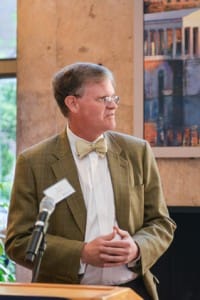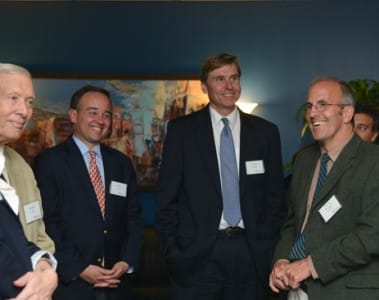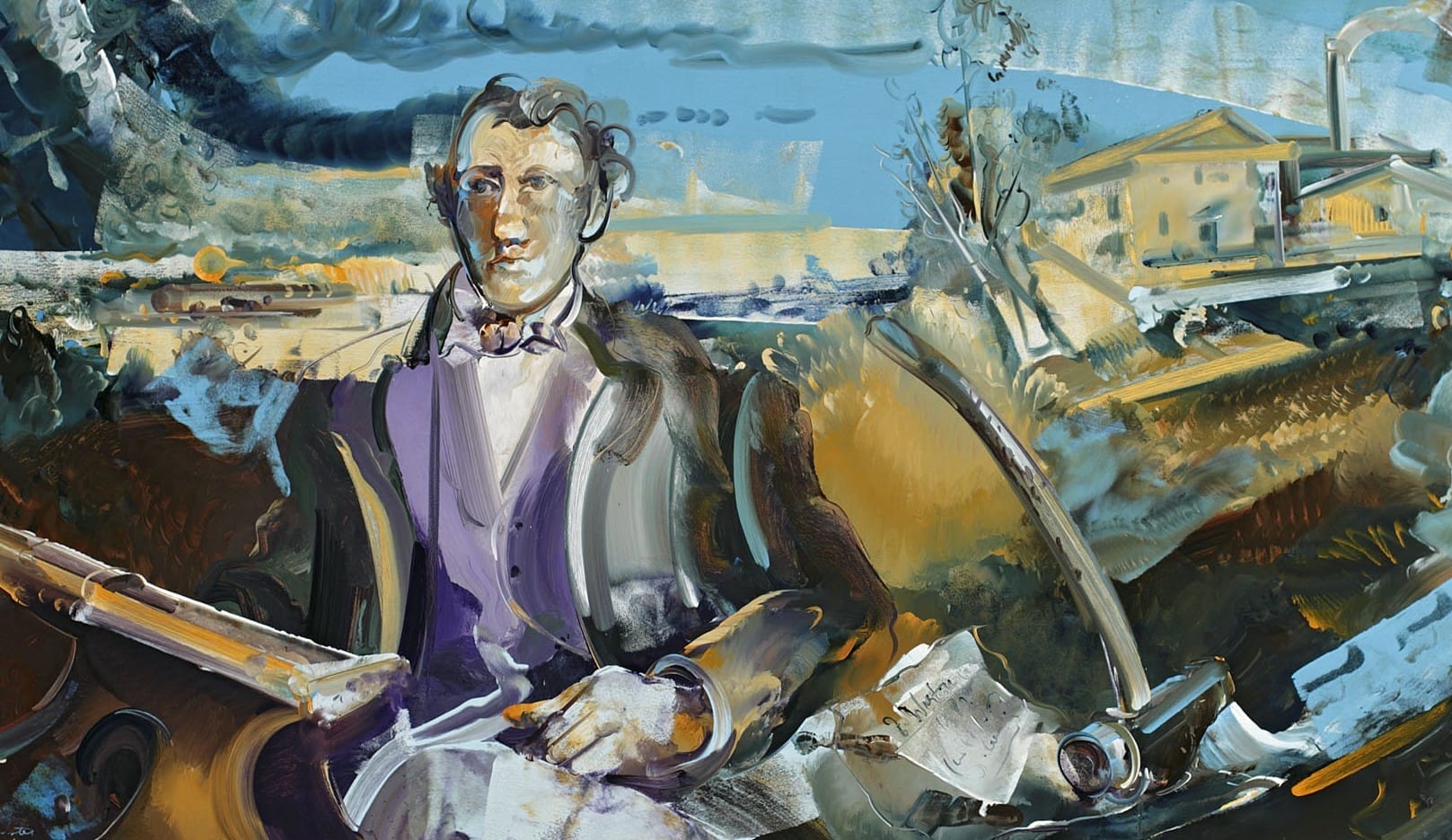Earlier this year, the Wharton School’s art collection grew thanks to the donation of a series of paintings and drawings honoring the life and times of Joseph Wharton. They were commissioned by the late William Polk Carey, W’53, founder of the eponymous corporate financing firm and chair of the W.P. Carey Foundation.

Gus Carey
Wharton celebrated the artwork with a reception and unveiling on Thursday, Sept. 20. Dean Thomas S. Robertson addressed an intimate gathering of Carey’s friends and family, Wharton community members, and admirers of artist David Brewster, GFA’88.
Brewster illuminated the details of how he and Carey decided to create the collection to attendees. At its heart, according to Brewster, was Carey’s love of history.
Carey’s nephew, Gus Carey, also explained that his uncle was particularly interested in the history of Wharton the man. He was inspired by the life of the School founder.
“Bill was excited to have David retell the history of Joseph Wharton,” Carey said.

David Brewster, GFA’88 (right), and friends and family of William Polk Carey, W’53, admire the collection in Vance Hall. Photo credits: Shira Yudkoff.
Indeed, whereas Wharton founded the first business school in the world, Carey founded two 21st century institutions: Arizona State University’s W. P. Carey School of Business and the Carey Business School at Johns Hopkins University. His W.P. Carey Foundation also supports several prizes, chairs and lecture series promoting the fields of business, economics and international relations, including the Wm. Polk Carey Prize in Economics and the Francis J. Carey Chair in Mathematics at Penn.
At Wharton, Carey had close relationships with many of the School’s deans and was also eager to discuss “what he could do to make the world a better place,” his nephew said. He often recruited Wharton’s “best and brightest” as well.
His latest gift to the School is housed in the School’s Vance Hall building at 37th and Spruce Streets. The series of 10 paintings illustrates significant events in Joseph Wharton’s career from 1846 to 1905. The paintings took a year to complete and offer a distinct blend of realism and abstraction.
The evening’s reception concluded with the guests touring the paintings and Brewster providing live insight on the paintings depicting such scenes as a young Wharton presented with his trademark anvil, Wharton serving as a mentor in the University’s Furness Library, scenes from the Wharton-owned Bethlehem Iron Company, and the days of an older Wharton spent at Marbella in Jamestown, RI.

























